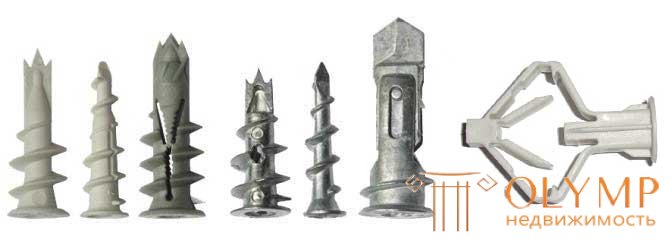
When the wall or ceiling is sheathed with plasterboard, there is often a desire to attach something to it. Be it a regular painting, a lamp or a bookshelf, you need to know which hardware is perfect for such works. Often used dowel for drywall, which is of different types. For a specific purpose, you need your own specific fasteners.
Conventional dowels work on the principle of spreading the space inside the material where they are inserted. In the case of drywall, it is better to look for other options to avoid damage. For this reason, the dowel under the drywall is fixed on the prince of the girth of the sheet on both sides (in most cases). When working with plasterboard use one of two types of dowels: pass-through or expanding.
Content: [hide]

For drywall use special dowels: passable or expandable
Thanks to its unique design butterfly fastener for drywall is used in many situations. This self-tapping element is clamped when twisting and tightly fixes other elements that are between it and the plasterboard.
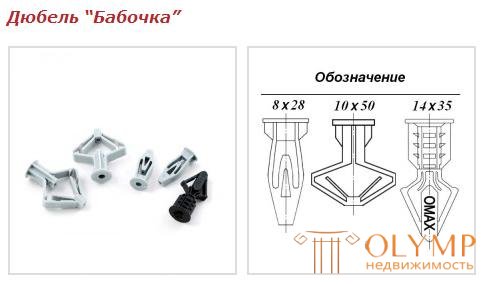 The butterfly can be used to fasten two sheets of drywall at the same time.
The butterfly can be used to fasten two sheets of drywall at the same time.

Choosing the right size dowel
There are several types of butterflies, which are the most popular when working with drywall.
Game: Perform tasks and rest cool.7 people play!
Play gameSuch a small element, having a length of 28 mm, is well suited for fastening small structures. Such plastic fasteners are sold as they are, so self-tapping screws will need to be purchased separately. Standard phosphate screws 3,5x35 mm fit perfectly.
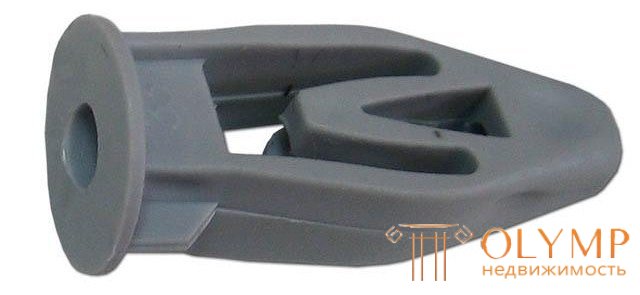
Small dowels are not equipped with screws
After marking the wall, holes are drilled. Any drill can punch drywall, as long as its diameter is 8 mm. Drill in this case is not required, because even an ordinary screwdriver to cope with the task.
The dowel nail butterfly for drywall is pushed into the drilled hole until it stops. You may have to squeeze it with two fingers so that it goes into the hole. Now you can screw the screw, which will force the petals to cling to the back of the drywall. One such dowel can withstand a load of about 16 kg.
Butterfly fasteners 50 mm long are most in demand when it comes to attaching something to a plasterboard surface. The main difference of this fastener from the previous one is the increased size of the spacers, which allows you to transfer the load to a large area.
This butterfly anchor for drywall has additional tongues. During tightening, these tongues increase the strength of fasteners.
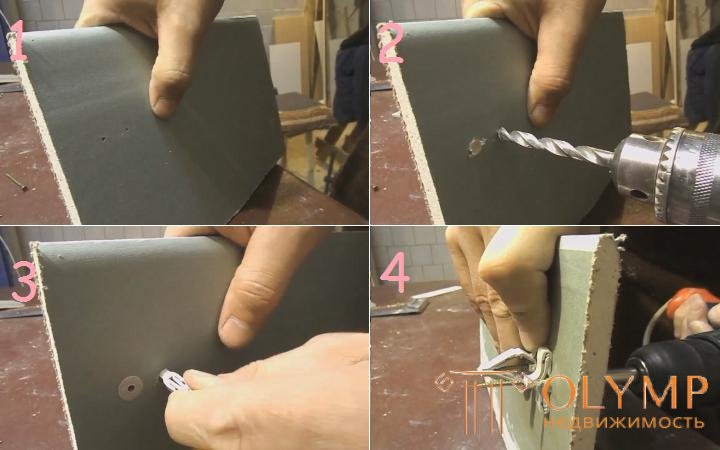
Step-by-step installation guide for butterfly plug
Installation using such dowels is the same as in the previous case. True, the screws need to take a length of at least 55 mm. You can take longer screws, if attached thick construction.
Drilling a hole will need a thickness of not 8, but 10 mm. Further work is carried out similarly, as with a butterfly 8x28 mm. Even a beginner should not have questions about how to fix the dowel in drywall, but the butterfly is so convenient for work.
 Often there are questions about the material from which the dowel should be made. The following options are on the market:
Often there are questions about the material from which the dowel should be made. The following options are on the market:
The cheapest are plastic items that have filled the market and are used everywhere. If you do not need to hang too heavy objects, then the plastic dowel is suitable for the task.
Before you mount the butterfly for drywall, you need to find out what allowable loads the dowel can withstand depending on the type.
There are butterflies in which you do not need to use a screw, because they come with a special screw. Such a screw has a tip, the shape of which is different. This may be a hook, ring, semicircle, etc. Such fasteners are used to create prefabricated elements on the wall, on which various structures will be hung.

The metal butterfly is several times more expensive than its plastic counterparts. It is more reliable and practical, and is also able to withstand increased loads. This dowel must be coated with an anti-corrosion compound.
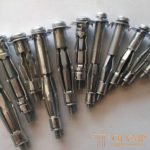 The dowel, which works on the principle of "butterfly", but consists entirely of metal, is called molly. The molly metal dowel for molly drywall is chosen by those who care about the high quality of the product, despite its cost. Work with this fastener is carried out in the following sequence.
The dowel, which works on the principle of "butterfly", but consists entirely of metal, is called molly. The molly metal dowel for molly drywall is chosen by those who care about the high quality of the product, despite its cost. Work with this fastener is carried out in the following sequence.

With a special tool, a screw is pulled back, so that the dowel petals open
Professionals consider this technique a bit wrong. The fact is that when molly is inserted into the hole, then with the help of a special pistol the screw is pulled back, and the petals open. Then the screw is unscrewed and you can mount the desired design. However, not everyone will buy such a special tool to hang one shelf or mirror.
As you can guess, the principle of action for the metal and plastic dowels for gypsum craton are not much different. However, Molly's dowel for drywall is the fastener that is suitable for use even after dismantling. It is easily twisted and installed in a new place, and plastic butterflies are disposable.
Galvanized steel or stainless steel is used as the molly material, so there is no doubt about the durability of the product. Galvanization is carried out by electroplating and is considered to be a fairly good protection against corrosion. Stainless steel is even more resistant, but its price is much higher.
Which screw for molly is worth choosing:
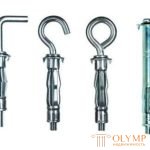 hook. Such a screw head is in demand in cases of fixing ceiling lamps;
hook. Such a screw head is in demand in cases of fixing ceiling lamps;
The low cost and simplicity of the design made the wood very popular. A drift dowel is used for drywall with a minimum thickness of 9 mm. With it, it is good to mount not very heavy elements. Sometimes it is called "snail".
The fastener has the following advantages:

Screwing dowel screwdriver
For fixing the chandelier is best to use spring-through fasteners. In addition to the spring mechanism, the dowel umbrella for drywall uses folding wings and a special metal rod that powers these wings. This dowel is inserted into the hole with pursed petals, which the spring will deploy as soon as the fastener reaches the empty body.

Dowel "umbrella" has folding wings that unfold after screwing
Chemical anchors are a special capsule containing an adhesive mixture. The capsule will crush, and the glue will flow out at a certain moment of attachment of such an anchor. A special chemical reaction inside the hole creates a joint that will provide a secure fit.
Что бы оставить комментарий войдите
Комментарии (0)